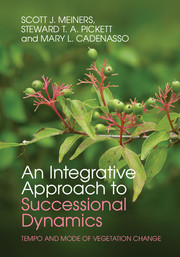Book contents
- An Integrative Approach to Successional DynamicsTempo and Mode of Vegetation Change
- An Integrative Approach to Successional Dynamics
- Copyright page
- Contents
- Nou wè nan kote nou kanpe
- 1 Goals, concepts and definitions
- Part 1 The conceptual background and development of succession
- Part 2 Successional patterns in the BSS data
- Part 3 Integrative themes
- Part 4 Synthesis
- Book part
- References
- Index
- References
References
Published online by Cambridge University Press: 05 April 2015
- An Integrative Approach to Successional DynamicsTempo and Mode of Vegetation Change
- An Integrative Approach to Successional Dynamics
- Copyright page
- Contents
- Nou wè nan kote nou kanpe
- 1 Goals, concepts and definitions
- Part 1 The conceptual background and development of succession
- Part 2 Successional patterns in the BSS data
- Part 3 Integrative themes
- Part 4 Synthesis
- Book part
- References
- Index
- References
- Type
- Chapter
- Information
- An Integrative Approach to Successional DynamicsTempo and Mode of Vegetation Change, pp. 268 - 299Publisher: Cambridge University PressPrint publication year: 2015

